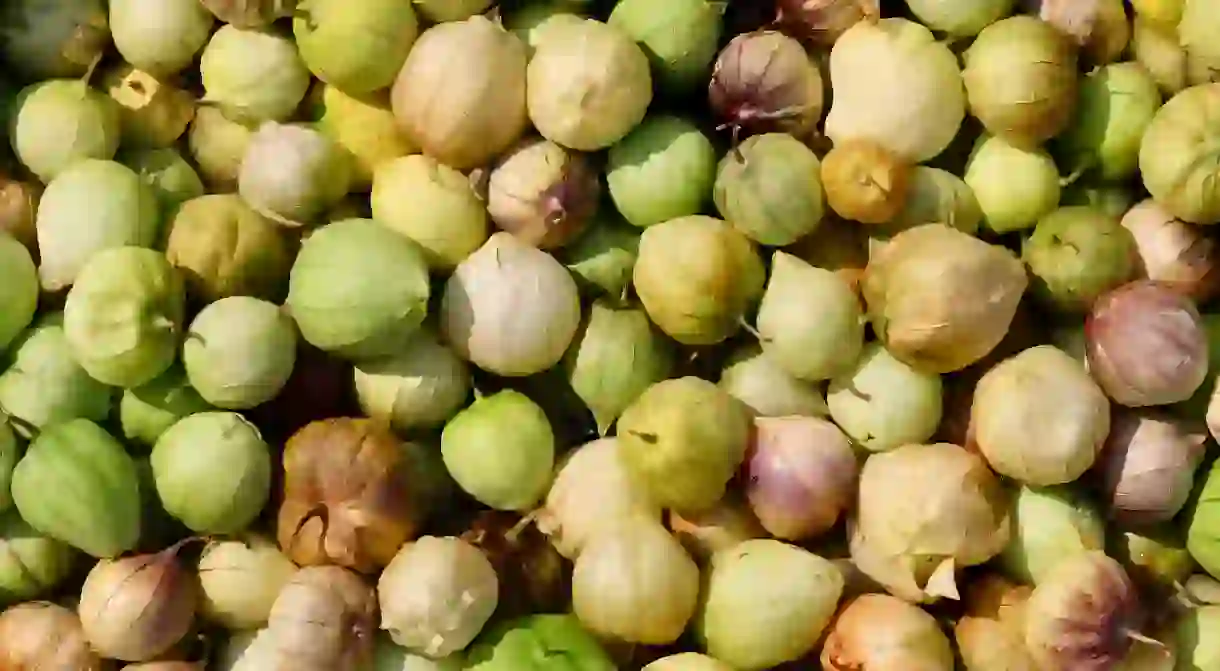A Guide to Mexico's Different Fruits and Vegetables and How to Use Them

Mexican grocery stores and local markets overflow with fruits and vegetables that most of us are familiar with –apples, oranges, potatoes, tomatoes – but they also hold a few hidden treasures that you’ve likely never heard of before. To prepare you for your next trip to a Mexican market, we take a look at some of the country’s most delicious fruits and veggies and how you can prepare and eat them.
Did you know – Culture Trip now does bookable, small-group trips? Pick from authentic, immersive Epic Trips, compact and action-packed Mini Trips and sparkling, expansive Sailing Trips.
Mamey
Peel back the rough, humble-looking exterior of the mamey and you will be surprised by the ruby-orange flesh underneath. It tastes something like a sweet potato with a little more sweetness, and is quite possibly one of the nation’s favorite fruits. The mamey is best eaten on its own as a snack, but is also great in puddings, with ice cream, or covered in sticky condensed milk and eaten raw. The fruit’s large center pit is ground up and used in a Oaxacan drink called tejate, which has a creamy, nutty flavor.
Black sapote
The ripe sapote negrolooks as if it’s already on its way to being inedible and moldy. Its skin is soft and crumpled, like a green fruit balloon running out of helium. But cut open the sapote and you will find a creamy, midnight-black interior flesh that is sweet and rich, like a luxurious chocolate pudding. Besides being full of antioxidants and vitamin C, black sapote is versatile – you can eat it in ice cream, in desserts, or just spoon out the flesh.
Nopal

One of Mexico’s most important and famous succulents, the nopal cactus is revered for its health benefits and is used in hundreds of different dishes. Despite the sap of the cactus that makes this plant okra-slimy, many tasters who reject it at first will find themselves craving it later on. The most common method of preparation is to cut it up with raw onions, cilantro, and chilis, but it can also be cooked, mashed, blended, or grilled. The flavor is slightly tangy and its texture is soft with a crunch, a little like that of green bean.
Jicama
Among the fruit and taco vendors on the Mexican streets, you’ll likely run into someone selling jicama in a cup with chili, salt, and lime, or jammed onto a stick and doused in sweet and salty candied powder (these are called jicaletas, a play on the Spanish word for suckers or lollipops, chupaletas.). While the vegetable’s white flesh has little or no flavor (it’s largely water and starch), its apple-like texture makes it a satisfying snack to bite into when covered in lime and spice. The fruit looks like a giant brown turnip and must be peeled to reveal the white edible flesh underneath.
Pitaya

The pitaya resembles the magenta hair of a Troll doll, and the inside flesh is pure white with hundreds of tiny black seeds that give it a speckled look (its flesh can also be bright pink, depending on the variety). The flavor is mild and just the tiniest bit sweet, but with a hint of melon. People often compare it to a kiwi without the punch, a comparison its texture reinforces. Also called dragon fruit, this tasty treat is most often eaten raw and by itself, but it can be added to fruit salads, eaten with a sweet sauce for dessert, made into a refreshing drink, or used in a smoothie.
Jackfruit

The presence of jackfruit or jacka on the market shelves demands attention. Not only is it gigantic and covered in tiny rounded spikes, it is also bright green. Its flesh inside is white with large, flat, black seeds (you have to spit them out) and the consistency is a bit like an overripe banana. The fruit has a mellow flavor and is used in soups, chips, jam, and ice cream as well as having its seeds ground into flour.
Prickly pear

The prickly pear, or tuna in Spanish, is one of Mexico’s most popular and well known endemic fruits. They are found in a range of colors and levels of sweetness, depending on the specific variety and the point in the season at which they are harvested. The tuna has a similar texture to the pitaya or a kiwi, and has a mild, watery sweetness that is great for use in jams, sauces, juices, and desserts, or on its own. The fruit is harvested from the previously mentioned nopal cactus that grows across the Mexican dessert.
Tomatillo

Generally referred to as tomate verde (‘green tomato’) in Mexico, the tomatillo is a staple in Mexico’s famous salsas, both cooked and raw. Bursting with water and and with flavor, tomatillos can be blended without adding any liquid to them and then dressed up with chilis, salt, garlic, and sometimes avocado. Their taste is decidedly tangier than a regular tomato, probably owing to the fact that, while they are a part of the nightshade family, they are not actually tomatoes. Tomatillos come with little pale green husks on the outside that must be removed before eating, and the fruit underneath is often sticky with sap.
Passionfruit

Called maracuya in Mexico, passionfruit has an unassuming yellowish skin and looks like a small, uninteresting fruit. What it hides beneath its dull exterior is an explosion of tangy-sweet pungency that will knock you off your feet. You will find this citrus fruit in the form of juice, or used in desserts, as its pulp clings tight to hundreds of seeds and eating it can be a laborious act (although its flat, black seeds are edible, so most people that eat the fruit just swallow them down). This is a must-try flavor on your next trip to Mexico.













